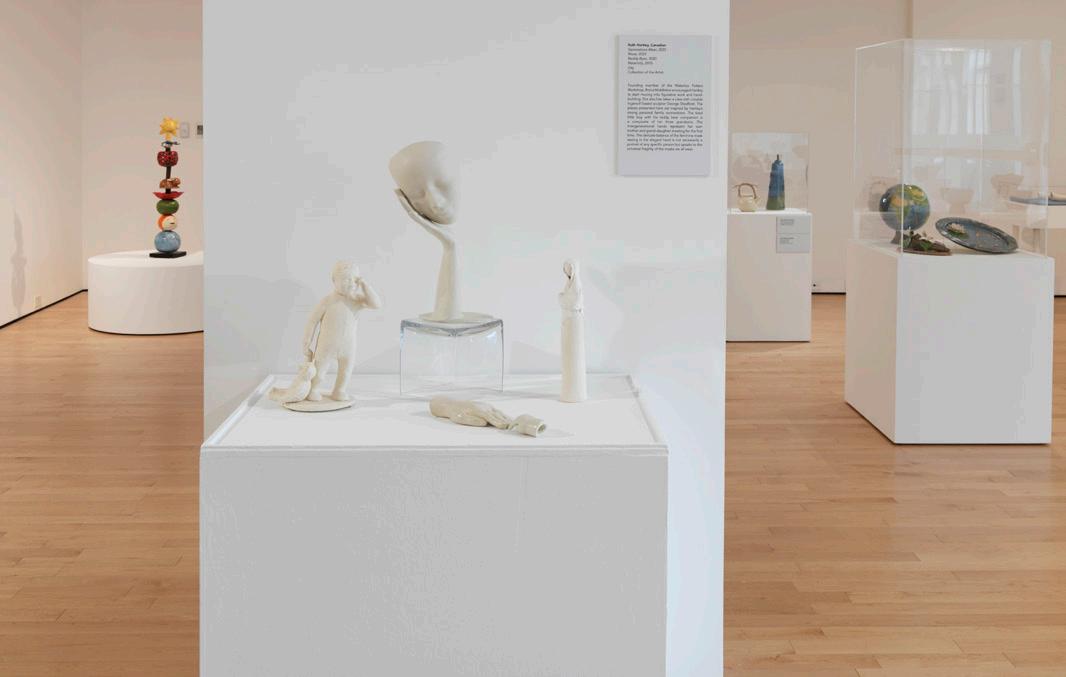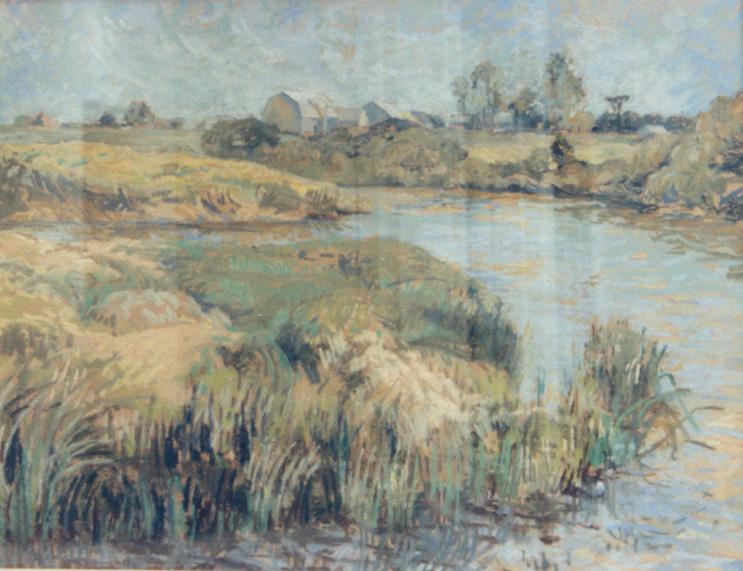2. Process

We followed a thoughtful, linear methodology in our approach, intending to evaluate, review, and update this strategy as milestones are achieved. As a small organization committed to serving a regional community, the Woodstock Art Gallery prioritizes meaningful community engagement. In light of the COVID-19 pandemic, the global importance of meeting audiences both in-person and online is essential to remaining relevant with visitors. This digital strategy bears this in mind and we’ve aimed for a balanced approach in serving multiple needs.
Remote interviews with staff members were the basis for much of the assessment, alongside document, content, and database reviews. This collaborative process informed a high-level SWOT analysis, identifying areas where digital efforts could augment the Gallery’s community-based strategic plan. The synthesis and analysis informed a set of Digital Strategy Goals and Objectives leading to a set of specific Projects and Tactics.
The working team involved senior staff to review the intended approach and then broadly engaged staff to ensure that we addressed immediate needs and low-hanging fruit while also looking toward an appropriately scaled digital presence reflecting our unique identity. Throughout the process, we offered our guidance in understanding and approaching digital technologies, fostering a spirit of learning and growth. Involving staff at each crucial stage strengthened the strategy and cultivated a model for future application.
This digital strategy, to be publicly available, serves as a dynamic, living document that will be adapted based on staff experiences and evolving assumptions, embodying the human element at the core of our organization. The Woodstock Art Gallery is committed to responsibly improving the public’s digital experience to connect with the community in new and meaningful ways.
4 WOODSTOCK ART GALLERY • 2023 DIGITAL STRATEGY
B
3. Current State Assessment
GALLERY SNAPSHOT
The Woodstock Art Gallery emerged from a strong community desire and has extensive grassroots support. In the 1950s, a call for an art show across Oxford County evolved into an annual juried exhibition, now celebrating its 65th year in 2023. The Gallery’s establishment resulted from lobbying the municipal government, and it initially partnered with the library in the 1960s. During its early days, the Gallery functioned as a community art centre, focusing on local artists and programs. The Woodstock Museum National Historical Site helped establish professional standards for the Gallery, formalizing its processes and efforts.
In 1983, the Gallery relocated to an older house adjacent to the library before moving to the fourstory building previously occupied by the John White Company in 2011. The current building has three renovated floors, one reserved for future use, each measuring approximately 6000 square feet. Federal and provincial grant funds supported the renovation.
The Gallery employs around half a dozen full-time equivalents (FTEs), some of whom are shared resources with the City of Woodstock. Staff members cover essential functions: Leadership,
Curatorial, Education, Collections, and Visitor Services. As is common in small organizations, staff members often multitask across different roles.
The collection comprises roughly 2000 objects, with about half photographed. Many works are copyrighted, prominently featuring pieces by notable painter Florence Carlyle (1864 – 1923). Approximately half the collection showcases living artists’ works.
The Woodstock Art Gallery remains true to its humble origins, prioritizing its role as part of the city and local community as both evolve from their traditional demographics. As a small cultural heritage organization, the Gallery benefits from being a department of the City of Woodstock. However, like many small organizations, it faces the risk of relying heavily on one or two individuals for specific knowledge areas, with even minor absences potentially causing workflow disruptions. This vulnerability was particularly noticeable during the pandemic, although staff members demonstrated adaptability in engaging the community and maintaining operations. The team takes pride in its engagement models and attentiveness to a diverse community’s needs.
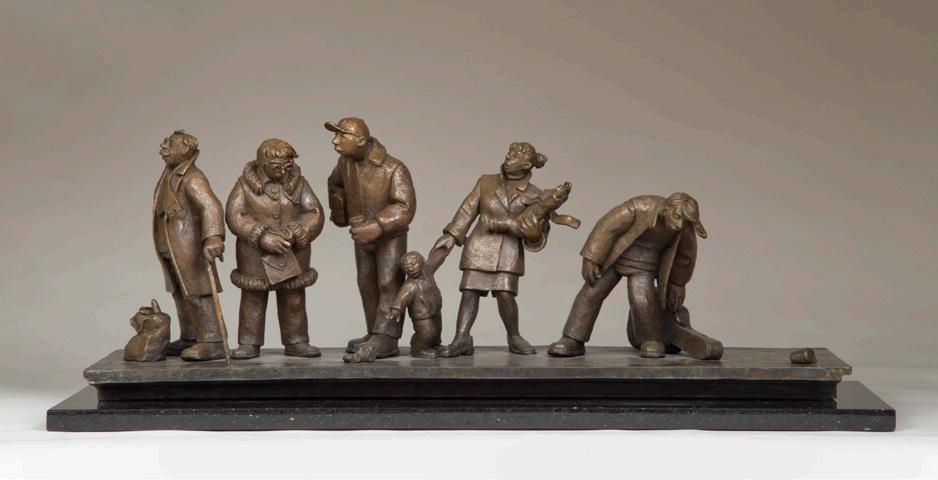
5 WOODSTOCK ART GALLERY • 2023 DIGITAL STRATEGY
C
CITY OF WOODSTOCK
The Woodstock Art Gallery is a department of the City of Woodstock that provides financial support, services, and utilities. This invaluable support grants a small organization access to shared resources. Consequently, the City’s IT Department defines the technology scope for the Gallery. For example, because the City utilizes Microsoft technologies, the Gallery also uses Microsoft software. The City’s IT manager offers a collaborative, open-minded, and service-oriented approach that significantly benefits the Gallery.
SYSTEMS
General Information Technology (IT)
Information Technology support, encompassing desktop support, systems support, and infrastructure, is provided by the City. This invaluable assistance alleviates a considerable burden on the Woodstock Art Gallery. Generally, the City dictates the focus and direction of technology used citywide, with the Gallery aligning itself accordingly, except for specific specialized needs and applications. Predominantly, Microsoft platforms and software are employed for routine operations. MS Office serves as the go-to for email, word processing, spreadsheets, and presentations, with occasional use of Google’s equivalents. Monday.com facilitates project management, task assignments, and progress tracking. Adobe Cloud applications are gaining traction, though a lack of adequate training hinders proficiency. Canva is utilized for creating content for social media applications.
A single large shared drive caters to all staff and Gallery needs, self-organized by departments and individuals. Periodic cleanups occur; however, organizational efforts can wane as staff members transition away from the Gallery. Shared directories on the drive enable staff to collaborate, access, and edit resources.
WiFi is being introduced to both staff and public spaces in the Gallery. Meanwhile, all staff members currently benefit from wired connections in their workspaces, and the City manages backups and security as needed.
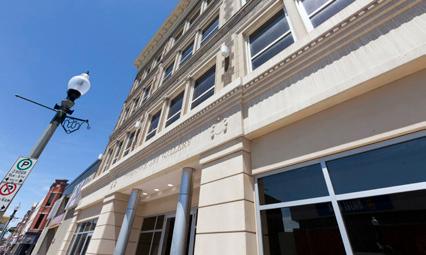
Collections Management System (CMS)
A CMS serves as a vital tool for cultural organizations, storing a vast array of information about the objects in their collections. This encompasses basic details such as the work’s name, artist, medium, and size and more specialized data, including provenance, loan status, physical condition reports, and exhibition history. The CMS is a crucial software system for any organization that manages a physical collection.
The Woodstock Art Gallery recently upgraded its CMS from PastPerfect to Argus, which succeeded an MS Access database and multiple binders of printed information before that. Argus offers a robust and versatile CMS with enhanced capacity for information, images, and supplementary content. During any system transition, data from the previous system must be meticulously reviewed for consistency, edited to adhere to updated standards, and integrated into the new digital environment. Argus’s parent company facilitated much of the data transfer in this latest transition, although the process remains slow and ongoing.
The Gallery collaborates with the neighboring museum for Argus maintenance, receiving basic training and regular database backups. Argus also supplies the digital resources necessary to publish the collection as an online resource and document content created for new exhibitions. Despite the new capabilities and improved storage for image resources, the collections staff must update existing information to meet the new standards and harness the system’s full potential. This is particularly important for enhancing photography of a significant portion of the collection and continuing to incorporate past exhibit information into the system.
6 WOODSTOCK ART GALLERY • 2023 DIGITAL STRATEGY
D
Digital Asset Management (DAM)
The Gallery does not support a standalone Digital Asset Management System. Given the size of the Gallery and that most staff directly interact and engage with each other, the use of a DAM isn’t a day-to-day requirement. However, over time, multiple copies of files are sometimes created, and with loose discipline, some disorganization is likely to build up in the shared file directories, especially as staff changes over time.
Ticketing / Point of Sale (POS)
The Woodstock Art Gallery employs a single system, Legend POS, to accommodate its ticketing, event registration, fundraising events, and point-of-sale needs. The City selected Legend POS for multiple departments, though a transition to a new system, PerfectMind, is expected within the next year. Legend POS effectively addresses the Gallery’s straightforward requirements without requiring additional services or features. The integration of TipTap in recent years has proven to be a valuable enhancement, quickly becoming the preferred donation method.
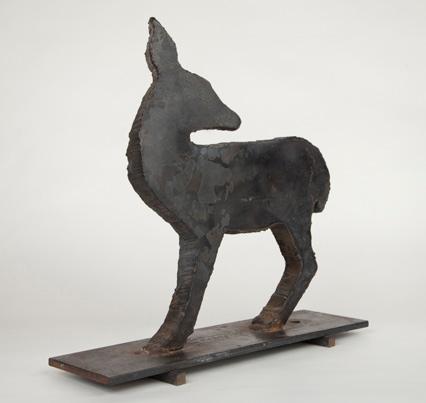
The Gallery houses a gift shop primarily serving local artists rather than operating as a distinct profit center. Consequently, there is no cash register on the premises. The same system also manages artist talks and virtual workshops, which are offered free of charge and delivered through Zoom.
Membership / Customer Relationship Management (CRM)
The Gallery’s membership base is relatively modest, comprising less than 500 members before and after the pandemic. Membership benefits are mainly transactional, such as offering discounts as part of the package. Membership management is handled through PastPerfect5.0,thefinalstandaloneversion, before transitioning to the current web-based iteration. Staff usage is limited and primarily focused on manual processes, which can feel cumbersome and challenging to streamline (particularly regarding email communications) since the current support contract has lapsed due to infrequent need and cost.
The Gallery considered implementing a gift membershipprogram,buttechnicaldifficulties and limited interest hindered its development. Given the small scale of the membership focus, there is no pressing need to enhance the current technologies or engage in comprehensive tracking of members and their ongoing involvement. However, as the region’s population and Gallery attendance grow, it may be worthwhile to reevaluate the membership approach and explore potential software options when resources permit.

7 WOODSTOCK ART GALLERY • 2023 DIGITAL STRATEGY
F E
Website / Social Media

The Gallery’s website is part of the City’s website, with the core infrastructure and server maintained by the City. The Communications Coordinator at the Gallery is responsible for the website’s content and organization, as well as the organization’s social media presence. Currently, there is no comprehensive website analytics available. While the City previously used Google Analytics, they are now shifting to Monsido. This shift to a more comprehensive quality assurance platform allows the City to be more effective and efficient in terms of monitoring the overall health of the website (broken links, spelling, stale content, etc.), as well as improving accessibility and providing more robust analytics.
While the Gallery benefits from the support of the City to maintain the website, this ongoing relationship introduces several challenges. Adding new features and capabilities can be a slower process and must fit within the existing Content Management System (CMS) framework. The unique branding and presentation of the Gallery’s online content are limited, and the lack of a unique domain name and URL hinders its online presence. Although the City is conducting an audit of its website, extracting information specific to the Gallery is complex and not readily available, limiting future planning based on repeat use and deep engagement.
This is not to say that the City is unhelpful or discourages the Gallery’s online growth; however, incremental improvements and changes take longer and are more complex than they would be otherwise. The City is a valuable resource, and the tradeoff between capability and support is reasonably balanced, but staff should reevaluate this balance as the Gallery expands its digital efforts.
Regarding the Gallery’s social media presence, Sprout is used to manage scheduling and general publishing efforts, with the Gallery actively participating in the platform’s selection. Sprout’s analytics offer valuable insights into audience engagement with the Gallery’s content. Currently, Facebook has the highest interaction with the traditional audience, predominantly older females, while Instagram appeals to a slightly younger audience. Twitter and LinkedIn generate minimal responses. In evaluating engagement, the Gallery prioritizes click rates, shares and comments (actions taken with the content) over simple likes to measure genuine engagement.
Apps
The Gallery has explored the use of digital content within its space by utilizing the Stqry platform. Stqry is a web-based content management system that simplifies the process of incorporating text, audio, and video, transforming them into an appbased, accessible experience for mobile devices. This approach prioritizes content creation over the technical aspects of delivery. The Gallery’s education staff have experimented with the platform and found it user-friendly and effective for incorporating text and images. Currently, seven iPads are available for use; six for distribution to the public and one for development and testing.
Most visitors, particularly those of a slightly younger demographic, have found the experience easy to navigate, indicating the potential for further use in future exhibits, focusing on integrating audio and QR codes. The primary challenges to broader adoption are the unfamiliarity with some of the platform’s intricacies and the time and resources required to review and refine these efforts.
8 WOODSTOCK ART GALLERY • 2023 DIGITAL STRATEGY
G
DIGITAL TOOLS / PROCESSES
Education and Public Programs
The Woodstock Art Gallery prioritizes the use of its collection in both educational and public programming, serving as a source of inspiration and learning space for artistic techniques and tools. School programs typically accommodate 15-30 students for 90-minute sessions featuring a 30-minute guided tour and an art activity. For every eight students, there is one adult chaperone. While in-person programming is preferred, the Gallery adapted to online offerings during the pandemic, including a short film of the vault tour and artist studio experiences. Prior to the pandemic approximately 10,000 students, mainly from Oxford County, engaged with the Gallery each year. Teacher resources are informal and ongoing, relying on two email newsletters and personal communication to improve programming over time. Online booking request forms and program information on the website streamline the scheduling process for both teacher visits and community groups. Public programming is available year-round for all ages, including toddlers. During the pandemic, the Gallery swiftly pivoted to online programming as it closed to visitors. Most programs succeeded across various metrics, with artist talks and virtual workshops attracting around 100 Zoom attendees and many repeat visits. Education staff established a well-documented production cycle, which can be easily replicated, allowing the Gallery to seamlessly incorporate online efforts alongside in-person programming, given additional resources.
Content Production
The Woodstock Art Gallery diligently produces content to support upcoming programming, utilizing a content calendar maintained through Monday.com. The calendar includes content planned up to a year in advance, such as for the newsletter, ArtCity column and What’s on Woodstock magazine, while generally focusing on details for the current and following month. Individual staff members create most of the content, and collaboration occurs through shared directories on the shared drive when needed. Staff members are primarily self-taught and actively share their expertise and experiences with one another. While there is some documentation of processes, it may need to be more comprehensive.
Photography
The Woodstock Art Gallery primarily outsources its collection photography due to the need for more in-house resources, such as appropriate cameras, lighting, and space. Engaging a local photographer periodically has proven to be a more cost-effective solution. Although initial image capture occurs on-site, post-processing occurs off-site, with the final images delivered to the Gallery within one or two weeks. The master images, saved as uncompressed TIFFs, are incorporated into the Collections Management System, Argus.
Gallery staff generates any required derivatives for online use, social media, programming, presentations, and other requests as needed. Additionally, there has been a recent emphasis on utilizing exhibition installation periods to photograph objects that either lack images or require higher-quality source images. Concerns regarding rights and reproductions processing remain minimal.
Online Resources
The Woodstock Art Gallery has been gradually expanding and experimenting with various online resources, driven mainly by the Education Department’s efforts. These resources encompass online exhibitions, utilizing in-gallery content and on-site photography, educational materials, art activities, webinars, initial digital tours through the Stqry platform, and live-streamed experiences via Zoom. The Gallery aims to offer the community these resources as free services to the community, acknowledging a potential emerging audience while avoiding competition with other readily available online resources.
Accessibility
Accessibility is a core requirement of all digital efforts by the Woodstock Art Gallery and the City of Woodstock. While the Gallery aims to meet well-established standards, there is a desire to advance those standards and experience where possible. Any materials produced for social media, online resources, and digital experiences must fully comply with accessibility standards.
9 WOODSTOCK ART GALLERY • 2023 DIGITAL STRATEGY
4. SWOT Analysis
To better identify the key issues digital efforts could impact, the Digital Strategy team conducted a SWOT analysis based on multiple online discussions with staff. SWOT stands for Strengths, Weaknesses, Opportunities, and Threats, and provides an effective framework for analysis. The first two elements are internal, focusing on positive and negative aspects, while the latter are external. By applying this analysis, the Woodstock Art Gallery aims to gain insight into areas where digital efforts could assist or be impactful.
STRENGTHS
Establishing Purposeful Roots: The Woodstock Art Gallery
The Woodstock Art Gallery is a purposeful organization that creates an environment of focus and awareness with its constrained resources. Unlike larger cultural organizations in the province and beyond, it does not compete but complements them. Its size and location keep it closely rooted in the community that founded it and benefits from the support of the City of Woodstock and other organizations.
Collaborative Staff: Fostering a Supportive Environment
Due to its size, the staff is collaborative in their planning efforts and day-to-day operations. While each team member has their specialties, they are also aware of what others are working on, which allows for greater efficiencies and opportunities. The supportive environment and reasonable expectations promote a harmonious workplace culture.
Transparent Processes: Open Communication
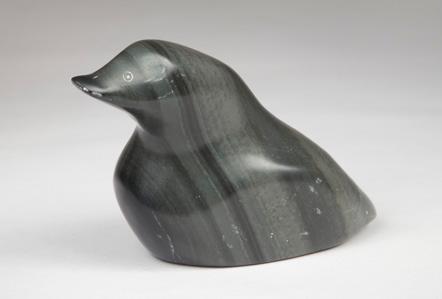
The Woodstock Art Gallery fosters open communication and facilitates the easy sharing of information and efforts among departments. Staff members value gaining insights into what is happening in other areas of the organization, and routine efforts and processes remain straightforward, avoiding overlapping approaches. In nearly all instances, sharing information and experiences occurs openly and efficiently.
Nimble and Creative Organizational Approach: Adapting to Change
The staff at the Woodstock Art Gallery demonstrates nimbleness and quickly adapts to changing circumstances. Understanding the available resources, leadership responds to emerging issues and concerns through weekly meetings and regular communication across all levels. The Gallery’s adaptation of programming in direct response to in-person attendance at the onset and conclusion of the pandemic is evidence of this agility.
Core Collections Data in Good Shape: Digitization with Ease
In assessing the collections data, a random sampling generally showed very good data structure and consistency across the multiple staff members that have recorded collections data over time. While substantial work is needed to complete the collection’s digitization, no substantial clean-up effort is required. Most of the work will be additive, allowing new resources to become quickly available.
10 WOODSTOCK ART GALLERY • 2023 DIGITAL STRATEGY
H
WEAKNESSES
Overcoming Challenges: A Look at Staff Utilization and Resource Limitations
The small and purposeful nature of the Woodstock Art Gallery often stretches most staff members thin as they accommodate the diverse needs of routine operations. High staff utilization rates mean most staff members work beyond 100% utilization, handling not only their core work requirements but also additional responsibilities as necessary. Consequently, little capacity remains for stepping back from work to formulate new approaches or take on additional workloads.
Alongside high staff utilization, the organization contends with limited resources when addressing new areas of interest or improving existing ones. These limitations encompass staff time, budget constraints, and digital capacity. The organization must make necessary tradeoffs to undertake new efforts, responsibly removing an equivalent effort. This process proves difficult in an organization that enthusiastically tries to meet an internal mandate and various external needs.
Digital Presence: Expanding and Refining Capabilities
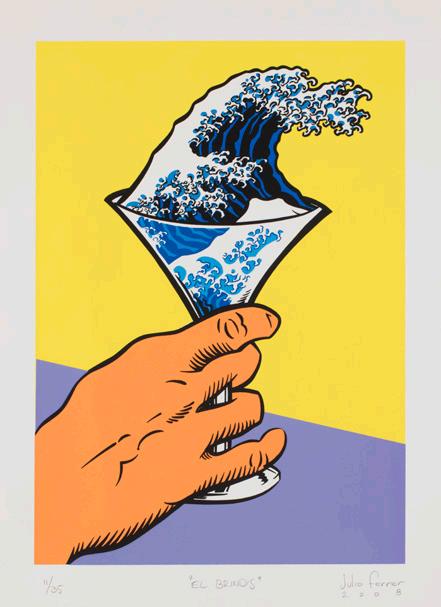
The Woodstock Art Gallery’s digital presence and focus are small. Staff members are limited by what they have directly seen or encountered. Without additional resources to focus on digital projects, expanding or refining any existing digital presence and capability becomes challenging, let alone implementing new ideas for experimentation and improvement. Despite a slowly increasing demand for digital capabilities as part of standard museum practice, this remains a concerning issue.
Timeline for Changes: A Slow but Steady Process
In an environment of limited resources, implementing longer-term efforts is challenging, even with demonstrated enthusiasm from staff to adapt to change. Substantial changes in work and improvements take time to develop and learn and must happen alongside existing efforts, slowing down the overall adoption rate. Despite this, the Woodstock Art Gallery remains committed to growth and improvement, with a steady and deliberate approach to change.
11 WOODSTOCK ART GALLERY • 2023 DIGITAL STRATEGY
I
OPPORTUNITIES
Growth: Emerging Regional Opportunity
The Woodstock Art Gallery possesses a unique opportunity to connect with a growing and diverse regional population. As people relocate from traditional urban centers, the region has experienced growth and an increasingly diverse population, especially during the pandemic. This situation offers the Gallery a larger critical mass of traditional visitors and new population segments to engage and inspire through programming and digital means.
The City: A Source of Substantial Support

The City of Woodstock provides invaluable budgetary and infrastructure support for the organization. These direct tangible benefits give the Woodstock Art Gallery capabilities and resources that allow the organization to perform better and more efficiently than expected for a small organization. This mutually beneficial collaborative relationship has thoughtfully grown and evolved.
People: A Strong Community
Community support is at the core of the Woodstock Art Gallery’s success. The organization’s origins were strongly rooted in the surrounding community, and through carefully tailored programs and experiences over the years, community support has been warm, encouraging, and strong. The Woodstock Art Gallery has consistently engaged community members to review and refine the strategic plan and effort of the organization, ensuring that the Gallery remains a closely integrated member of the community.
Comparable Organizations: Scarce Regional Competition
With a strong regional presence and minimal competition, the Woodstock Art Gallery sustains ongoing interest over multiple generations. Few other organizations present similar programming or experiences, and the regional civic pride further supports the WAG. The Woodstock Art Gallery is committed to utilizing these opportunities to build stronger connections with the community and beyond, inspiring and engaging visitors of all backgrounds and ages.
12 WOODSTOCK ART GALLERY • 2023 DIGITAL STRATEGY
J
THREATS
External Resources Lead to External Dependencies
Embracing the net relationship as an opportunity also implies that digital and business systems might not cater to the Gallery’s specialized needs, resulting in slower timelines for adoption and implementation by Gallery staff. The Gallery remains committed to addressing these challenges while preserving a positive relationship with the City.
Regional Constraints: Fewer Peers and Tight Economies
As a unique organization in the region, the Woodstock Art Gallery recognizes the need for collaborative peer organizations to share ideas and resources for additional capabilities. The Gallery will continue to explore opportunities to connect and collaborate with other organizations to increase access to digital ideas and technologies, and realize economies of scale for implementation and collaboration. Additionally, in times of tighter economic constraints, rural areas feel more of the immediate impact and have less resilience than larger urban centers with more significant resources. The Woodstock Art Gallery acknowledges the potential impact of economic changes elsewhere and remains committed to finding creative solutions to address these challenges.
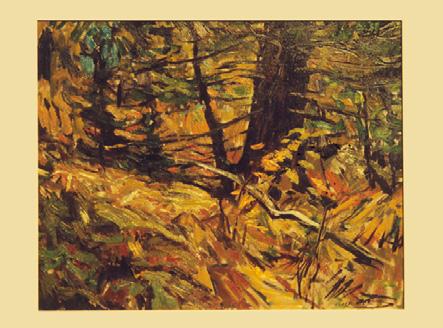
Changing Populations: A Potential for Missed Opportunities
As the regional population evolves, the Woodstock Art Gallery acknowledges the importance of understanding and addressing the emerging needs of these new populations. Though the Gallery has demonstrated openness and progressiveness in its planning, potential selection bias might exist, with individuals already inclined towards the Gallery continuing to attend and reinforcing the organization’s direction without necessarily engaging with the audiences who aren’t coming and addressing their needs. The Gallery remains committed to connecting with all community members, ensuring that the Woodstock Art Gallery continues to be a welcoming and inclusive space for everyone.
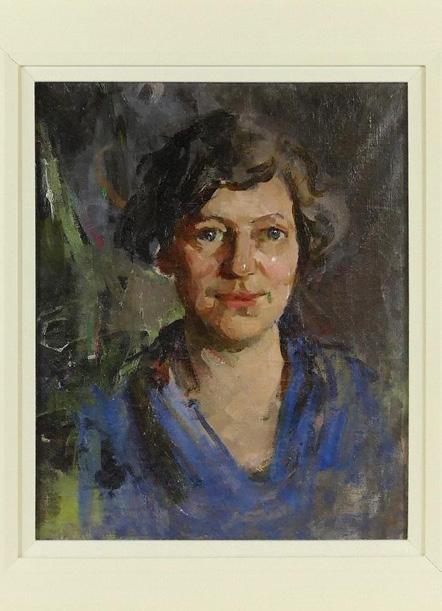
13 WOODSTOCK ART GALLERY • 2023 DIGITAL STRATEGY
K L
5. Digital Goals & Objectives
GUIDING PRINCIPLES
To craft a digital strategy that genuinely reflects the organization’s desired direction, we must base our thinking on the organization’s clearly stated mandate, mission, values, and goals. An effective strategy integrates into the bigger picture, emphasizing continuity rather than branching off into a separate path that might become easily detached from future efforts as resource allocations change. Furthermore, while digital initiatives can open new possibilities for any cultural organization, they must preserve their unique character and essence in their execution. Failing to do so would lead to the strategy’s demise, which would be justifiable.
In short, the beacons for our digital strategy thinking become:
• Ground thinking in the organization’s mandate, mission, values, and goals
• Emphasize continuity with the bigger picture
• Preserve the organization’s unique character and essence in digital initiatives
• Ensure the strategy remains relevant and adaptable as resource allocations change
• Recognize failures in execution that should not continue
KEY MESSAGES OF THE WOODSTOCK ART GALLERY
MANDATE
WAG’s core functions
MISSION STATEMENT
What WAG is, does, for whom, and why
VISION STATEMENT
What WAG intends to become over the next five years; and the key, high-level transformations it will commit to in order to successfully arrive in its future, ready and relevant
The Woodstock Art Gallery will be integral to our community’s wellness and vibrancy by broadening appreciation of visual art and celebrating our region’s diversity
CORE VALUES
What shapes WAG’s actions and interactions, unites WAG’s staff, and defines WAG’s brand
At WAG, we believe in…
• serving our whole community,
• leading through excellence,
• inspiring with creativity and innovation,
• welcoming and engaging everyone, and
• being purpose-driven, change-ready and accountable in all we do.
14 WOODSTOCK ART GALLERY • 2023 DIGITAL STRATEGY
Serving our region through our developing public collections, exhibitions and education programs, we are a leading resource for creativity.
As the region’s only public art gallery, the Woodstock Art Gallery fosters the wellbeing of our community by preserving our local artistic heritage and cultivating new expressions and experiences of art.
Several strategic initiatives in the most recent Community Report align with the assessment and SWOT analysis needs. In particular, they are:
2.0 Capacity Building (space and resources, human, time, and money)
2.1 Preserve the organization’s change- nimbleness through staff and Advisory Board training, recruitment, and succession planning that is proactive towards emerging trends and opportunities.
2.2 Grow programming, partnerships, and revenue generation opportunities by activating the development of the fourth floor.
3.0 Digital Drivers
3.1 Embed digital dimension(s) into exhibition/ education/collection experiences to balance and work in tandem with physical in-person programming.


3.2 Acquire technology/tools and training to support operational efficiencies and datadriven decision-making.
3.3 Grow digital communications (marketing, advertising, public relations) to drive engagement and increase accessibility and fundraising.
4.0 Public Engagement
4.1 Reinforce and grow WAG’s public profile through consistent and frequent expression of its identity (e.g., leveraging the launch of the new logo to grow the public’s familiarity with it), its values, and community benefits/ contributions.
4.2 Sustain valued partnerships, pursue others that share WAG’s values, and recognize the benefits of mutual investment and return.
4.3 Reconceive the WAG membership program and its value exchange.
4.4 Proactively connect with local community leaders and influencers to grow WAG’s goodwill and reach in the community.
15 WOODSTOCK ART GALLERY • 2023 DIGITAL STRATEGY
M N
DIGITAL GOALS
With the above values in mind, and after much thoughtful discussion across multiple departments, expressing needs and desires, we’ve established the following digital goals:
1. Establish and maintain core digital resources.
A solid foundation is vital for any future digital initiative. The Woodstock Art Gallery must implement a robust digital infrastructure, including well-maintained collection information, digital content, and a user-friendly website. These elements act as building blocks for all future initiatives, just as a well-constructed building and thoughtful staff form the foundation of public programming. By doing so, staff and visitors will gain access to various information and resources, significantly streamlining future digital efforts and initiatives.
2. Develop digital content capabilities for experimentation.
Innovation and experience are the lifeblood of the arts, and gallery visitors have increasingly high expectations and capabilities. The Woodstock Art Gallery should invest in developing and nurturing digital content capabilities that promote experimentation and creative expression, although at a responsible scale for the organization’s size. These efforts should naturally extend and supplement the organization’s programming, building iteratively over time. Using low-risk platforms and building on the improved infrastructure ensures no project scales beyond the organization’s resources.
3. Refine the digital footprint of the Woodstock Art Gallery.
A robust digital presence is essential for reaching a broad audience and cultivating a sense of community. The Woodstock Art Gallery should refine its digital footprint by optimizing its website for search engines, engaging on social media platforms, and utilizing content marketing strategies. By doing so, the Gallery can increase its visibility, attract new visitors both in-person and online, and foster meaningful connections with the collection.
4. Develop digital decision-making tools. Making informed decisions is crucial for the growth and sustainability of any organization, as well as for evaluating new efforts and initiatives. The Woodstock Art Gallery ought to develop digital tools that support data-driven decision-making. These tools might include analytics software for tracking visitor behavior, instruments for measuring the impact of new experiences, and platforms to manage and analyze feedback. By leveraging digital data, the Gallery can make strategic choices that align with its mission and values, ensuring the sustainability of its digital efforts and facilitating future planning.
16 WOODSTOCK ART GALLERY • 2023 DIGITAL STRATEGY
6. Digital Projects & Tactics
INTRODUCTION
The proposed digital strategy goals enable us to identify several distinct tactics and projects that capitalize on the organization’s strengths and opportunities while being mindful of the required resources. For each of these individual tactics, we briefly discuss and specify the organizational strategic goals they support, whether the projects are new or amplify existing efforts, the departments they benefit, and their place in a schedule over the next few years.
A critical aspect of this strategy involves creating the Digital Project Coordinator position. Ideally, this role should be full-time, but it remains viable even as a part-time position, though it would extend the overall timeline. Without this position, however, resource constraints would prevent the realization of multiple projects.
1. ESTABLISH AND MAINTAIN CORE DIGITAL RESOURCES
1.a Create Digital Project Coordinator Position
1.b Clean, update, and complete collections management metadata and information in Argus
1.c Update and complete digital images of collection objects
1.d Purchase licenses and provide training for software platforms
1.e Formalize online programming efforts
2. REFINE THE DIGITAL FOOTPRINT OF THE WOODSTOCK ART GALLERY
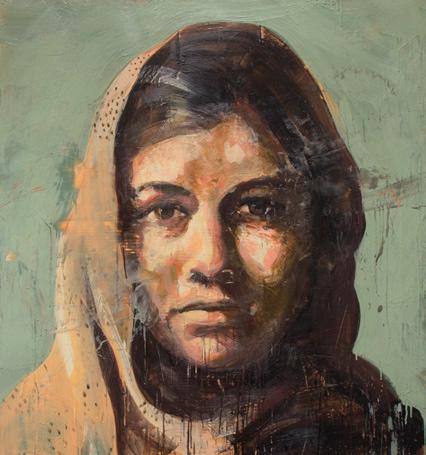
2.a Invest in STQRY app as the primary in-house digital delivery vehicle
2.b Reorganize and update the WAG website
2.c Develop social media strategy
2.d Update digital membership processes
3. DEVELOP DIGITAL CONTENT CAPABILITIES
3.a Develop digital media matrix
3.b Purchase AV editing software
3.c Provide content production training
3.d Formalize AV production processes
4.DEVELOP DIGITAL DECISION-MAKING TOOLS
4.a Identify analytics and KPIs for major systems
4.b Review current reports from each system and redefine as necessary
4.c Redefine membership tracking capabilities
17 WOODSTOCK ART GALLERY • 2023 DIGITAL STRATEGY
O
1. ESTABLISH AND MAINTAIN CORE DIGITAL RESOURCES
1.a Create Digital Project Coordinator Position
Effort: New | Increase
Org Strategy: Cpcty Bldg | Dig Drv | Pub Eng
Departments: Edu | Comm | Coll / Cur | Other
Timeframe: 0-1 years | 1-3 years | 3+ years
Duration: 2-3 years FTE
Budget: $55,000/yr - $60,000/yr
The rationale and specifics for the Digital Project Coordinator position are explained in greater detail in the staffing section of this report. It is crucial to emphasize that this role, whether parttime or full-time, offers the necessary support for staff to accomplish the proposed efforts while maintaining current workloads and ongoing initiatives. The position spans support for multiple departments but primarily focuses on collections and education.
For Collections, the Digital Project Coordinator would follow the guidance of the Head of Collections, concentrating on digitizing new objects for the collections management system, adding digital information to existing object records where needed, and ensuring the consistent use of vocabularies and taxonomies for digitized collections. An earlier survey of the existing digital collection information revealed a 10-15% gap in expected information across various samples, including provenance, conservation records, and other ancillary details. This issue stems from random inconsistencies rather than a consistent critical gap. The ongoing approach has been to update past records as objects are used in exhibitions, but this method is opportunistic rather than systematic and thorough. Moreover, a significant gap remains in the number of collections objects yet to be photographed, which also follows the same opportunistic, exhibit-based process.
For Education, the Digital Project Coordinator would build upon the earlier efforts of the education staff who worked with the Stqry platform to create app- and gallery-based digital experiences. The education department shifted to online experiences during the pandemic’s early stages. While the focus has returned to in-person visitors, the knowledge and experiences developed online should continue without compromising the current in-person
emphasis. The Stqry platform is user-friendly and versatile, with previous efforts receiving positive feedback. This position would involve adding content to the platform under the guidance of education staff while incorporating audio and video information where possible.
The platform enables iPad and tablet devices in galleries to supplement existing information. Developing content production skills and processes is crucial. Current staff members need to gain expertise in audio and video production, and this position would help develop those capabilities, making them applicable to other online and social media efforts.
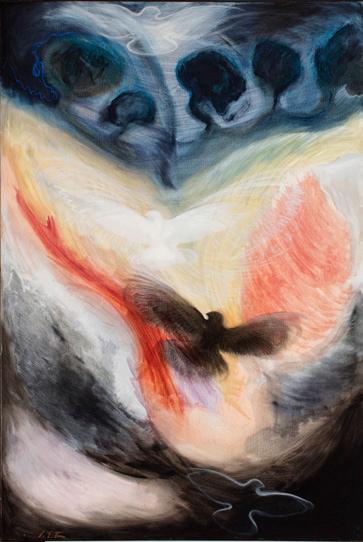
18 WOODSTOCK ART GALLERY • 2023 DIGITAL STRATEGY
P
1.b Clean, update, and complete collections management metadata and information in Argus
Effort: New | Increase
Org Strategy: Cpcty Bldg | Dig Drv | Pub Eng
Departments: Edu | Comm | Coll / Cur | Other
Timeframe: 0-1 years | 1-3 years | 3+ years
Requires DPC: yes | no
Duration: 2-3 years
Budget: included in the cost of DPC
Argus, the Collections Management System used by the Woodstock Art Gallery, serves as the primary information source for the 2000+ objects in the collection. Like many collections, the initial record-keeping was paper-based and spread across multiple filing and storage locations. Like other modern organizations, the Woodstock Art Gallery has transitioned to a digital system. However, this shift has been slow, ongoing, and, in practice, somewhat opportunistic. This situation is common, but it occurs alongside daily activities such as processing information, handling multiple requests, research inquiries, and other ways the collection supports the organization.
A primary objective of this initiative is to enrich the collection’s information by acknowledging the cultural backgrounds, origins, and diversity of both artists and the content of the objects. The Gallery is committed to supporting DEAI initiatives and recognizing BIPOC contributions, which enhances the digitized information about the collection. Moreover, there are several existing areas of incomplete information that warrant further attention and improvement.
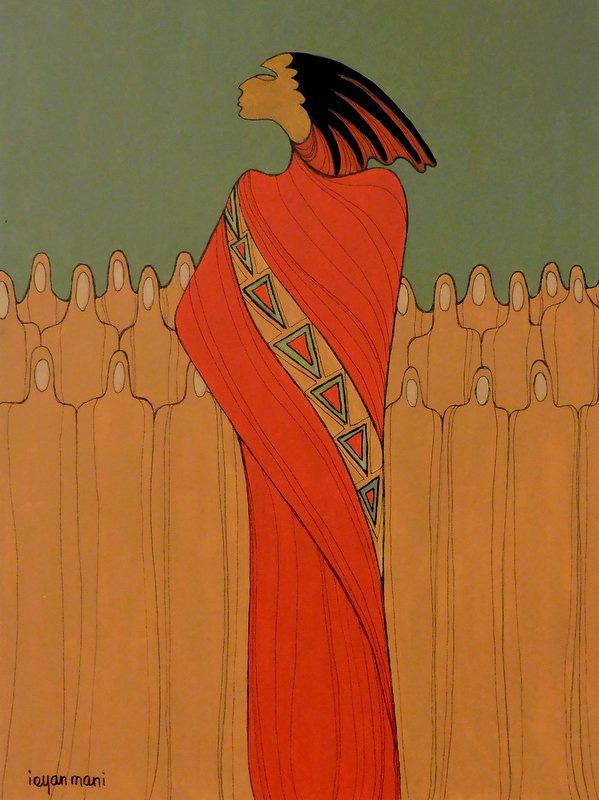
Based on our preliminary survey of the digitized material and our understanding of the
current
collections-related workload, completing the transition for the remainder of the collection and ensuring complete, consistent information would likely take 8-10 years. This delay becomes increasingly problematic over time, especially as more of this type of content is expected to be shared and accessible online. By adding the partially dedicated Digital Project Coordinator (DPC) position, the Gallery could complete most of the work in 2-3 years. If the DPC role becomes a part-time position, a more realistic timeline of 3-5 years should be expected, considering competing resources.
19 WOODSTOCK ART GALLERY • 2023 DIGITAL STRATEGY
Q
1.c. Update and complete digital images of collection objects
Effort: New | Increase
Org Strategy: Cpcty Bldg | Dig Drv | Pub Eng
Departments: Edu | Comm | Coll / Cur | Other
Timeframe: 0-1 years | 1-3 years | 3+ years
Requires DPC: yes | no
Duration: 1 year
Budget: $25,000
Images of objects hold immense importance within a collection’s records, as they play a crucial role in browsing, sharing, requests, research, teaching, and exhibition of artworks. Just as a website is almost a default expectation for an organization, images of objects are essential. However, since digital images are primary authoritative records, their creation demands careful consideration and control.
Professional object photography requires meticulously staged lighting, adequate space, colour calibration and correction, distortion removal, multiple views, and high quality. The Woodstock Art Gallery collection still has a significant backlog of objects awaiting digitization. While slow progress occurs opportunistically during
routine exhibit turnover, this method is insufficient. As part of the Digital Project Coordinator (DPC) position’s overall workload, we envision additional work scheduled in a regular pattern of effort.
Currently, outside resources handle photography due to the specialized equipment and requirements necessary for processing. We expect this arrangement to continue even with the DPC’s involvement. Most of the budget resources required are based on continuing to use the current photography provider. An alternate approach would allow secondary photography by WAG staff with equipment purchases of approximately $5,000 and another $1,000 in photography and software training.
1.d Purchase licenses and provide training for software platforms
Effort: New | Increase
Org Strategy: Cpcty Bldg | Dig Drv | Pub Eng
Departments: Edu | Comm | Coll / Cur | Other
Timeframe: 0-1 years | 1-3 years | 3+ years
Requires DPC: yes | no
Duration: 2-3 weeks (cumulative)
Budget: $3,000 - $4,500 (allowance)
Several software platforms see consistent use at the Gallery, yet staff members still need formal training for these essential tools. These platforms include Argus, the Collections Management System; Stqry, the digital content management system; and monday.com, the primary scheduling and collaborative project management software. In some cases, obtaining additional licenses may be necessary to provide equal and appropriate access for all staff members.
Although these platforms are regularly and routinely utilized, the skills to operate them have been informally passed down from one staff member to another. By engaging in vendorprovided formal training and review, staff members can ensure they follow best practices and reduce the need for workaround processes developed over time in response to specific needs.
20 WOODSTOCK ART GALLERY • 2023 DIGITAL STRATEGY
1.e Formalize online programming efforts
Effort: New | Increase
Org Strategy: Cpcty Bldg | Dig Drv | Pub Eng
Departments: Edu | Comm | Coll / Cur | Other
Timeframe: 0-1 years | 1-3 years | 3+ years
Requires DPC: yes | no
Duration: ongoing
Budget: no direct costs
In the early stages of the pandemic, the education department swiftly developed various online programs in response to the Gallery’s temporary closure. The department’s proactive approach to documenting the production effort and requirements for such online initiatives has been commendable. As we gradually transition back to in-person experiences, it is fitting to reflect on the potential of diverse online efforts, establish emerging standards, and aim to utilize the essential software platforms mentioned earlier.
Specifically, Gallery staff should craft guidelines for online exhibits, educational resources, art activities, programs, webinars/artist talks, and virtual workshops. The organization should then integrate these guidelines into standard practice for scheduling new events and exhibits. This approach ensures validation of the guidelines and allows for necessary refinement based on visitor feedback and lessons learned during implementation.
2. REFINE THE DIGITAL FOOTPRINT OF THE WOODSTOCK ART GALLERY
2.a Invest in STQRY app as the primary in-house digital delivery vehicle
Effort: New | Increase
Org Strategy: Cpcty Bldg | Dig Drv | Pub Eng
Departments: Edu | Comm | Coll / Cur | Other
Timeframe: 0-1 years | 1-3 years | 3+ years
Requires DPC: yes | no
Duration: ongoing
Budget: $2,500 / 1st year, $1,000 / recurring
The Stqry platform has emerged as an intriguing software platform with several key features that warrant further development by staff. An initial goal is to create a set of audio tours that provide more in-depth information for visitors. While this content is expected to be deployed as part of an app-based experience, it will also contribute to a steadily growing online archive. Over time, this will develop into a substantial online resource.
Second, incorporating QR codes into displays as trigger points for activating Stqry-based information is recommended. Most visitors can easily access QR codes with mobile devices, offering a seamless link between physical spaces and online information.
Third, the development of Stqry content should become standardized within the general exhibit development process. While only select content may be included in the final exhibition presentation, secondary and more detailed content can be integrated into online and Stqrybased experiences, extending the exhibit’s reach. As staff works on these tasks iteratively, they will also have the opportunity to refine their digital content production workflows and skills.
21 WOODSTOCK ART GALLERY • 2023 DIGITAL STRATEGY
2.b Reorganize and update the WAG website
Effort: New | Increase
Org Strategy: Cpcty Bldg | Dig Drv | Pub Eng
Departments: Edu | Comm | Coll / Cur | Other
Timeframe: 0-1 years | 1-3 years | 3+ years
Requires DPC: yes | no
Duration: ongoing
Budget: no direct costs
The Woodstock Art Gallery’s website benefits greatly from being hosted as part of the City of Woodstock’s overall web infrastructure. This supportive and collaborative relationship is valuable and should continue well into the future. Although there has been considerable work in updating and reorganizing the website since 2019, there will likely be further changes that come down from the City’s website audit. However, it is now an opportune time for a comprehensive review of the website’s organization to better align with current activities and initiatives. With the introduction of advanced analytical tools, WAG staff can gain deeper insights into the most frequented sections of the website, enabling more informed experimentation with content.
The working relationship between the Gallery and the City is becoming increasingly streamlined, allowing WAG staff to transition to a more autonomous workflow, thus facilitating the quicker and more efficient deployment of changes. It is essential to consider potential areas for content reorganization in anticipation of expanded collections information, increased online content availability, and new material and programming aimed at the growing regional audience. As the Gallery reevaluates its website organization, it is crucial to acknowledge the website’s increasing significance as a critical point of public engagement.
2.c Develop social media strategy
Effort: New | Increase
Org Strategy: Cpcty Bldg | Dig Drv | Pub Eng
Departments: Edu | Comm | Coll / Cur | Other
Timeframe: 0-1 years | 1-3 years | 3+ years
Requires DPC: yes | no
Duration: 1 year
Budget: no direct costs
The Communications Department at the Woodstock Art Gallery is exploring a more comprehensive approach to social media, drawing on the successes and challenges experienced over the past few years. Museums and galleries increasingly recognize that their diverse audiences engage differently with various social media platforms, and not all platforms align with an organization’s tone and temperament. Even with limited resources, organizations must consider which social media platforms to prioritize in order to maximize their efforts thoughtfully.
Implementing enhanced analytics and distribution platforms for the Gallery will streamline social media initiatives and make content distribution more efficient. Based on current insights and visitor engagement, Facebook should be the primary social media focus for the Gallery, with Instagram and Facebook serving as platforms for short-format video experimentation. These endeavors should align closely with content production efforts on the Stqry platform and the reorganization of content for the website.
22 WOODSTOCK ART GALLERY • 2023 DIGITAL STRATEGY
2.d Update digital membership processes
Effort: New | Increase
Org Strategy: Cpcty Bldg | Dig Drv | Pub Eng
Departments: Edu | Comm | Coll / Cur | Other
Timeframe: 0-1 years | 1-3 years | 3+ years
Requires DPC: yes | no
Duration: 1 year
Budget: no immediate direct costs, eventual membership software upgrades
There is potential for digital enhancements within the existing membership program, particularly in developing a digital membership feature that enables visitors to access a scannable code on their mobile devices for Gallery transactions. This innovation should integrate seamlessly with the
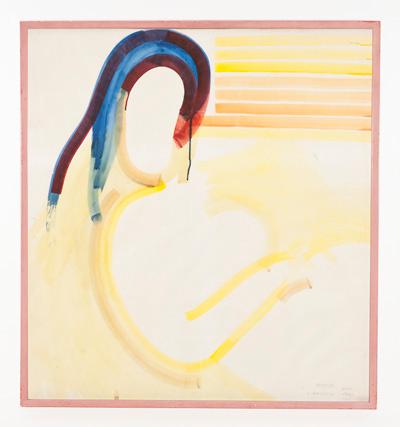
3. DEVELOP DIGITAL CONTENT CAPABILITIES
3.a Develop digital media matrix
Effort: New | Increase
Org Strategy: Cpcty Bldg | Dig Drv | Pub Eng
updated Point of Sale system, which the City will implement in the upcoming fiscal year. Moreover, when evaluating potential membership software applications, it is essential to consider solutions that support gift memberships and facilitate improved automated email processes.
Departments: Edu | Comm | Coll / Cur | Other
Timeframe: 0-1 years | 1-3 years | 3+ years
Requires DPC: yes | no
Duration: 1 year
Budget: no direct costs
Given the staff’s available resources, developing a comprehensive understanding of content creation and its various applications is crucial when considering a digital content workflow. Ideally, this approach allows the Gallery to emphasize outputs that enhance multiple experiences. For instance, when producing a narrated video about a particular artist, potential outputs could include a display on a Gallery tablet, integration into an in-house audio tour, inclusion in a YouTube series, or as part of an educational resource on the website.
Recognizing and identifying the possible outputs for content helps prioritize production and determine which skills to develop in-house and which ones to outsource reasonably. Outputs with high-frequency use are better suited as in-house solutions, while irregular outputs may not necessitate the same skill set. The Digital Project Coordinator should oversee this organizational effort.
23 WOODSTOCK ART GALLERY • 2023 DIGITAL STRATEGY
R
3.b Purchase AV editing software
3.c Provide content production training
3.d Formalize AV production processes
Effort: New | Increase
Org Strategy: Cpcty Bldg | Dig Drv | Pub Eng
Departments: Edu | Comm | Coll / Cur | Other
Timeframe: 0-1 years | 1-3 years | 3+ years
Requires DPC: yes | no
Duration: ongoing / 2-4 weeks for training
Budget: $900 / yr for software
As part of our long-term strategy, the Gallery aims to integrate in-house learning and understanding into regular digital content production as part of our long-term strategy. While platforms like Argus and Stqry offer essential building blocks, the production effort and audio and visual content workflow require distinct skills. Both audio and introductory video have been consistently recognized as valuable components across various initiatives.
The Gallery has purchased a license for Adobe Creative Cloud which includes many video tutorials and training tools, enabling our education and communications staff to collaborate effectively on content production. Through continuous experimentation, we anticipate documenting and formalizing processes that align with the Gallery’s requirements, ensuring future staff can seamlessly adopt and utilize these procedures.
4. DEVELOP DIGITAL DECISION-MAKING TOOLS
4.a Identify analytics and KPIs for major systems
Effort: New | Increase
Org Strategy: Cpcty Bldg | Dig Drv | Pub Eng
Departments: Edu | Comm | Coll / Cur | Other
Timeframe: 0-1 years | 1-3 years | 3+ years
Requires DPC: yes | no
Duration: ongoing / 1 year
Budget: no direct costs
As we reorganize our website and enhance social media monitoring, we now have access to advanced tools for tracking the reach of both, thanks to the City’s resources. Using tools to monitor and analyze peoples’ experience with our website and social media platforms will allow us to improve user experience, drive engagement and measure progress towards our goals. The optimal approach involves carefully collecting and reviewing existing analytics to establish baseline metrics, identifying a select group of meaningful indicators to monitor before launching new features and experiments, and then tracking the performance of those key performance indicators over time.
Year-over-year growth and change should be expected, with modest increases targeted. As more collection information becomes available online, we anticipate increased traffic to the corresponding section of the website, especially as it integrates with the material being developed in the Gallery. Moreover, we should continuously validate the effectiveness of short video experiments on both Facebook and Instagram.
The primary objective here is to cultivate a habit of monitoring a baseline, deploying a new effort, and evaluating the results to ensure that the investment of time and resources justifies the outcome or to determine whether a new focus is necessary.
24 WOODSTOCK ART GALLERY • 2023 DIGITAL STRATEGY
4.b Review current reports from each system and redefine as necessary
Effort: New | Increase
Org Strategy: Cpcty Bldg | Dig Drv | Pub Eng
Departments: Edu | Comm | Coll / Cur | Other
Timeframe: 0-1 years | 1-3 years | 3+ years
Requires DPC: yes | no
Duration: 1-2 years
Budget: no direct costs
In the same vein, each business system has a range of existing reports that are regularly utilized. There needs to be a systematic evaluation of their full usefulness, or if there is a need to refine the existing reports and update their usage throughout the organization. This
assessment should fall under the purview of the Digital Project Coordinator role. If needed, they should spearhead efforts with vendors to create new reports or receive the necessary training to revise the report formats in-house.
4.c Redefine membership tracking capabilities
Effort: New | Increase
Org Strategy: Cpcty Bldg | Dig Drv | Pub Eng
Departments: Edu | Comm | Coll/ Cur | Other
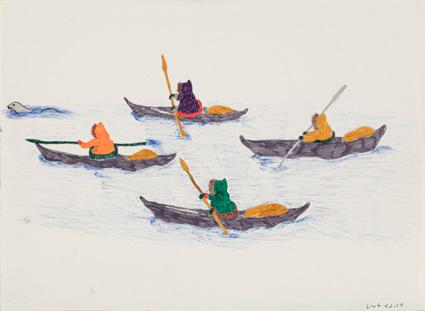
Timeframe: 0-1 years | 1-3 years | 3+ years
Requires DPC: yes | no
Duration: ongoing effort over 1-3 years
Budget: no direct costs
There needs to be more comprehensive membership tracking capabilities that illustrate how WAG members interact with the organization over time. This limitation is primarily due to the constraints of existing software systems. As the new POS system is deployed throughout the City, efforts should be made to determine the optimal configuration for obtaining more valuable longitudinal data about members. Ideally, this information would lay the foundation for a robust membership program fostering deeper regional community integration.
25 WOODSTOCK ART GALLERY • 2023 DIGITAL STRATEGY
S
The Woodstock Art Gallery, though small, is modestly staffed and finds it challenging to handle its current workload. However, when considering additional digital capacity and creation, the Gallery pushes beyond the existing skillset and capacity of the current staff. We acknowledge the need for balance within the organization; as staff members already work at 100%, introducing something new requires removing something from the overall portfolio. Nevertheless, the projects we suggest and prioritize in this digital strategy document aim to augment and supplement the organization’s ongoing efforts. Consequently, we recommend creating a new staff position to enable and undertake much of the work suggested here.
DIGITAL PROJECT COORDINATOR
We envision a role that spans multiple functions and serves the needs of various departments, with the title of Digital Project Coordinator. The primary focus involves managing various digital efforts across the organization rather than concentrating on a single department. Ideally, this position would be full-time with a mid-range salary (approximately $55,000 - $60,000). However, a part-time role could be a feasible alternative if resources are limited, although it would extend the project timelines. Taking an intermediate step proves better than making no progress at all. Ideally, funding for the position would last at least two years, but considering the role’s likely evolution, making it a permanent position would be beneficial.
The position’s three primary focus areas, as currently conceived, are:
• Collections Management Support (approximately 65% of the time) This primary focus involves our largest digital initiative, which includes digitizing the remaining collection, adding new content to individual records, and creating new collections records to ensure the completeness of the Collections Management System. Ideally, this work would also cover secondary information, such as details about artists. diversity, individual works, cultural background, Canadian Census demographic context, past exhibit material, related educational material, and programming records.
• Stqry Support and Development (approximately 25% of the time)
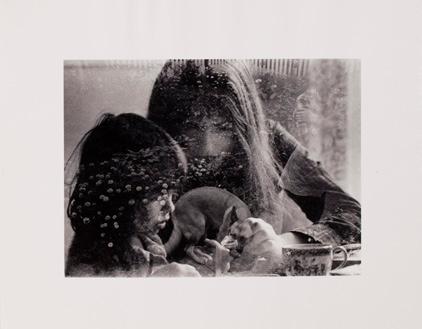
Collaborating with the education staff, the Digital Project Coordinator could develop the next iteration of app- and kiosk-based experiences for the various exhibits. By building on the initial work with the Stqry platform, audio tours, extended information, and content from the previously mentioned collections work, the Digital Project Coordinator could create new offerings for visitors. This role should also include developing accessibility resources for any new material presented digitally.
• Digital Standards and Metadata Oversight (approximately 10% of the time)
While working on the collections data and content for the Stqry platform, ensuring consistent metadata standards and vocabularies is crucial for future project utility. Developing new ways to describe content should anticipate future use to avoid refactoring already completed work in later years. Though this can be exacting work, it helps create a more robust digital foundation.
We have attached a reference position description as an appendix to this strategy document.
26 WOODSTOCK ART GALLERY • 2023 DIGITAL STRATEGY
7.
T
Staffing
8. Summary
Below is a summary table of the suggested Goals and their subsidiary tasks.
27 WOODSTOCK ART GALLERY • 2023 DIGITAL STRATEGY
GOALS & TACTICS EFFORT STRATEGIC GOALS DEPARTMENTS TIME FRAME DPC DURATION BUDGET NEW INC CB DD PE EDU COMM COLL / CUR OTHER 1. ESTABLISH AND MAINTAIN CORE DIGITAL RESOURCES 1.a Create Digital Project Coordinator Position 0-1 years yes 2-3 years FTE $60,000/yr 1. b Clean, update, and complete collections management metadata and information in Argus 1-3 years yes 2-3 years part of DPC 1.c Update and complete digital images of collection objects 1-3 years yes 1 year $25,000 1.d Purchase licenses and provide training for software platforms 0-1 years no 2-3 weeks (cumulative) $3,000-$4,500 (allowance) 1.e Formalize online programming efforts 1-3 years no ongoing no direct costs 2. REFINE THE DIGITAL FOOTPRINT OF THE WAG 2.a Invest in STQRY app as the primary in-house digital delivery vehicle 1-3 years yes ongoing $2,500 / 1st yr $1,000 / future 2.b Reorganize and update the WAG website 0-1 years no ongoing no direct costs 2.c Develop social media strategy 0-1 years no 1 year no direct costs 2.d Update digital membership processes 3. DEVELOP DIGITAL CONTENT CAPABILITIES 3.a Develop digital media matrix 0-1 years yes 1 year no direct costs 3.b Purchase AV editing software 1-3 years no ongoing $900 / yr 3.c Provide content production training 1-3 years no ongoing part of 3.b 3.d Formalize AV production processes 1-3 years no ongoing part of 3.b 4. DEVELOP DIGITAL DECISION-MAKING TOOLS 4.a Identify analytics and KPIs for major systems 0-1 years yes 1 year no direct costs 4.b Review current reports from each system and redefine as necessary 1-3 years no ongoing $900 / yr 4.c Redefine membership tracking capabilities 1-3 years no ongoing part of 3.b
Image Credits
COVER IMAGE: Ruth Hartley: Form and Flowers
Photo Credit: Joseph Hartman.
Kay Aubanel, Canadian (b. 1935), Landscape #1, 1962, chalk pastel on paper, 47.00 x 61.00 cm, Estate of Gladys McDougall, 1988, Woodstock Art Gallery Permanent Collection, Photo Credit: Robert McNair.
Gerald Pedros, Canadian (b. 1951), Prussian Blue Series #25, 1998, oil on board, 122.00 x 153.00 cm, Gift of the artist, Woodstock Art Gallery Permanent Collection, Photo Credit: Robert McNair.
George Shadford, Namibian/Canadian (b. 1959), Metro, 2005, bronze (marble base), 25.40 x 66.50 x 20.00 cm, Purchased in part with the Cleeve Horne Purchase Award presented by the Ontario Society of Artists, Woodstock Art Gallery Permanent Collection, Photo Credit: Robert McNair.
Building Profile -
June 16 2020 - Trish Roberts
E
John McEwen, Canadian (b. 1945), Study for Model (Deer), 1985, Corten steel, 30.00 x 31.00 9.00 cm, Gift of Karen Mulhallen, Woodstock Art Gallery Permanent Collection, Photo Credit: Robert McNair.
F
Florence Carlyle, Canadian (1864-1923), Helene, c. 1908, oil on canvas covered board, Bequest of Virginia Lynn Johnston Godin, 2012, Woodstock Art Gallery Permanent Collection, Photo Credit: Rita Taylor.
G
Lou Palmer, Canadian (1929-2019), Beams, 1977, watercolour on paper, 76.50 x 57.00 cm, Purchase, 1977, Woodstock Art Gallery Permanent Collection, Photo Credit: Robert McNair.
H
Nellie Appaqaq, Inuk (1936-2000), Bird E-972 B2493-2, soapstone, 10.90 x 18.00 x 6.50 cm, Estate of Diana Knight, Woodstock Art Gallery Permanent Collection, Photo Credit: Robert McNair.
Julio Ferrer, Cuban/Canadian, b. 1973, El Brindis, 2008, serigraph on paper, 54.00 x 38.00 cm, Gift of Robert and Gillian Creighton, Woodstock Art Gallery Permanent Collection, Photo Credit: Robert McNair.
I Utagawa Kuniyoshi, Japanese (1797-1861), Female with child, woodcut on paper, 37.00 x 25.00 cm, Gift, Woodstock Art Gallery Permanent Collection, Photo Credit: Robert McNair.
Clare Bice, Canadian (1908-1976), Untitled (Fall Forest Scene, Studio #24), c. 1970, oil on canvas board, 40.50 x 50.70 cm, Gift of Jens Thielsen, 1993, Woodstock Art Gallery Permanent Collection, Photo Credit: Robert McNair.
L
Eva Bradshaw, Canadian (1871-1938), Portrait of Miss Tory, n.d., oil on canvas, 41.90 x 34.30 cm, Purchased with the assistance of the Art Acquisition Fund, City of Woodstock, Woodstock Art Gallery Permanent Collection, Photo Credit: Gardner Galleries.
Phyllis MacFarlane, Canadian (d. 1983), Petunias, 1962, watercolour on paper, 56.40 x 38.50 cm, Estate of Gladys McDougall, 1988, Woodstock Art Gallery Permanent Collection, Photo Credit: Robert McNair.
Ruth Yamada, Japanese/Canadian (1923-2001), Bird, 1970, ink on washi paper, 45.00 x 60.00 cm, Gift of the artist, Woodstock Art Gallery Permanent Collection, Photo Credit: Robert McNair.
O
Tony Scherman, Canadian (1950-2023), Malala, 2014-2015, encaustic on canvas, 122.00 x 114.00 cm, Gift of the artist, Tony Scherman, Woodstock Art Gallery Permanent Collection, Photo Credit: Shawn Sagolili.
John Eaton, Canadian (b. 1942), Metamorphosis, 1980, oil on canvas, 105.50 x 156.00 cm, Purchase, Woodstock Art Gallery Permanent Collection, Photo Credit: Robert McNair.
Maxine Noel, Santee Oglala Sioux (b. 1946), Remembrance, 2022, acrylic on canvas, 61.00 x 45.70 cm, Purchase, Woodstock Art Gallery
Permanent Collection, Photo Credit: John Hartman.
Greg Curnoe, Canadian (1936-1992), Diana Seated, 1963, gouache on paper, 88.90 x 88.90 cm, Gift of Zoe Curnoe, Woodstock Art Gallery
Permanent Collection, Photo Credit: Rita Taylor.
Malaya Akulukjuk, Inuit (1915-1995), Untitled (Four Kayaks), c. 1973, felt pen on paper, 28.00 x 38.00 cm, Gift of Eileen Senior and James and Mary Moorhead, Woodstock Art Gallery Permanent Collection, Photo Credit: Robert McNair.Look Again Form + Void. Photo Credit: Joseph Hartman.
Joseph Bryson, Canadian (b. 1953), Dream #2, 1978, black and white gelatin silver print, selenium toned, 20.00 x 25.50 cm, Gift of the artist, Woodstock Art Gallery Permanent Collection, Photo Credit: Robert McNair.
28 WOODSTOCK ART GALLERY • 2023 DIGITAL STRATEGY
M
N
P
Q
R
S
T
A
B
C
D
J
K
POSITION SUMMARY
-GENERAL STAFF
POSITION TITLE: Digital Development Coordinator


DEPARTMENT:
POSITION NUMBER: 00504937
GRADE: 7

JOB SUMMARY:
EFFECTIVE DATE: 14 September 2018
Reporting to the Director, the Digital Development Coordinator will be primarily responsible for the coordination, planning and delivery of a Digital Development Project at thethat will transform and enhance the visitor experience both in-gallery and online. Working closely with specialist staff and the Communications Coordinator, the incumbent will manage, initiate, organize and implement the Digital Development Project, conducting research, liaising with and overseeing the work of contract designers and service-providers, tracking budget and providing administrative support on a 30-month timeline. The role entails preparing correspondence, writing reports, making recommendations for project improvement, as well as other administrative duties in support of project execution.
KEY RESPONSIBILITIES:
• Work closely with the Director to identify project priorities, develop detailed project timelines, allocate resources, and build relationships and partnerships to advance the art museum's goals through sound project management and results-oriented activities.
• Manage and coordinate all administrative matters related to the delivery of the Digital Development Project. This may include initiating and preparing correspondence, preparing reports, and initiating skills development necessary to ensure a successful outcome.
• Develop, implement, execute and track a logistics plan that supports successful execution of the Project, which entails:
o Augment documentation of and make new research available online, preparing existing texts and creating new historical, technical and critical interpretive material for upload to accessible online collection records.

o Develop and deploy new digital tools to enhance visitors' in-gallery experience.
o Create accessible digital versions of existing publications.
o Develop beautifully designed digital platforms for new "born-digital" publications that will engage the emerging generation of scholars across all disciplines.
o Create an online template for digital exhibitions, which can be a teaching tool-for example for university student-curated programs-and an engine of fresh curatorial approaches to the collection, including custom programs directed to support elementary-school curricula.
o Integrate digitized collection and related research with wider digital humanities networks.
29
WOODSTOCK ART GALLERY • 2023 DIGITAL STRATEGY
• Manage Project finances including processing all financial transactions, coding invoices for payment and account administration, budget monitoring, forecasting, and tracking expenses.

• Apply project management skills, which include planning, coordinating and managing projects and initiatives to completion; conducting research; and scheduling/organizing meetings/events to further the Project components.
• Delegate work as necessary and monitor work load to balance priorities and ensure timely Project delivery. Research and identify top-quality service providers and strike terms of service contracts, tracking performance. Recommend and support the creation of casual or term staff positions to meet Project goals.
• Ensure Project integrity, sustainability and quality to museum standards including AODA compliance: meeting high standards of scholarly rigour, aesthetically satisfying interface design aligned with visual identities, and ease of access/use, including accessibility for culturally diverse users.
• Write briefing notes, agendas, project plans, web content, meeting materials, reports, research summaries etc.
• Make recommendations, create plans and implement changes for project improvements.
• Act as a primary contact, liaison, communicator and facilitator for gallery staff, as well as other university Departments/Units and internal/external stakeholders; and provide advice and guidance to others accordingly.
• Foster and maintain a sound working relationship with all members of the unit and assist them in their roles by ensuring they are informed of project activities, collaborating where possible to maximize efficiency and effectiveness of the unit.
• Undertake other duties in support of the unit.
REQUIRED QUALIFICATIONS:
• University degree in Visual Studies, Digital Media, Digital Humanities, Cultural Studies, Curatorial Practice, Art History, Communications or a related area; graduate degree is considered an asset.

• Minimum of three years of relevant administrative or communications development experience.
• Demonstrated skills in, and successful experience with, project management.
• Sophisticated understanding of the university environment and/or art museum practices.
• Foundational knowledge of art history, and its terminology and format conventions.
• Superior computer skills, and awareness of current and emerging technologies and effective user interface design. Command of Microsoft Office suite. Knowledge of web-site architecture and familiarity with Adobe Creative Suite are an asset.
• Satisfactory Criminal Records Check and Vulnerable Sector Screening required.
• Consideration may be given to an equivalent combination of education and experience.
SPECIAL SKILLS:
• Respects diversity and promotes inclusion in the workplace.
• Ability to assess priorities and handle difficult projects and problems simultaneously.
30
WOODSTOCK ART GALLERY • 2023 DIGITAL STRATEGY
• Initiative and resourcefulness to work independently, think and act strategically, creatively and dynamically and assume responsibility for implementation and completion of a project and meet deadlines in a high pressure work environment.
• Demonstrated ability to work collaboratively in a team environment. Ability to foster strong collaborative relationships. Advising skills.
• High-level planning, time-management and organizational skills to manage competing priorities and meet deadlines.
• Ability to deal with confidential material on a regular basis.
• Office and computer skills, including advanced knowledge of word processing software and familiarity with spreadsheet and database programs. In-depth familiarity with the web and ability to learn new software packages are required.
• Strong interpersonal and communications skills (both verbal and written) to deal with a diverse client group in a professional manner and to provide clear and accurate information.
• Demonstrated analytical, interpretive, research and problem solving skills. Ability to synthesize information from a wide variety of sources. Ability to conceptualize creative plans and workable solutions.
• Extensive knowledge o( university structure, policy and administrative systems at...
• Sound judgment, maturity, tact, discretion.
DECISION-MAKING:
• Judgment on wh�n lu involve/advise senior staff, on an emerging Issue.

• Make decisions on prioritizing one's own responsibilities, establish approaches to analytical problems and make recommendations for action. Determine options or range of solutions to problems where no clear guideline exists, complete work within necessary timelines.
• Determine content of various materials, including briefing notes, agendas, project plans, web content, meeting materials, reports, research summaries etc.
• Determine data collection and analysis methodology for research projects.
• Determine and recommend program for special events, meetings, functions as part of project management.
31
WOODSTOCK ART GALLERY • 2023 DIGITAL STRATEGY
waginfo@cityofwoodstock.ca woodstockartgallery.ca
The Woodstock Art Gallery is a division of the Department of Culture of the City of Woodstock.
449 Dundas Street, Woodstock, Ontario * P.O. Box 1539, Woodstock, Ontario, N4S 0A7 519.539.6761
